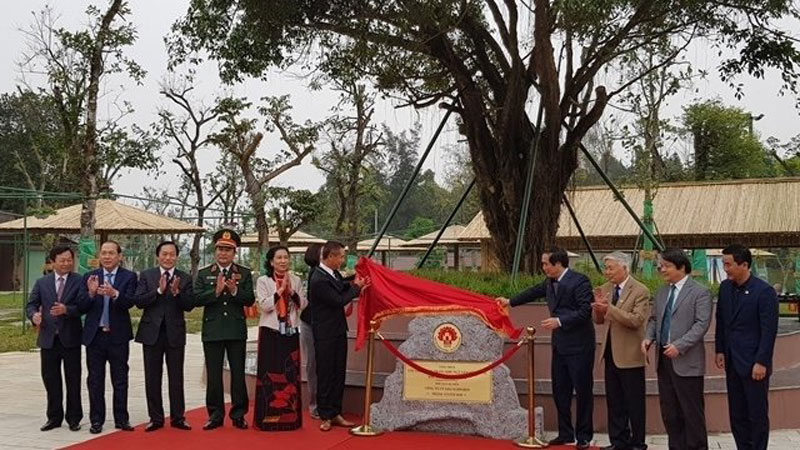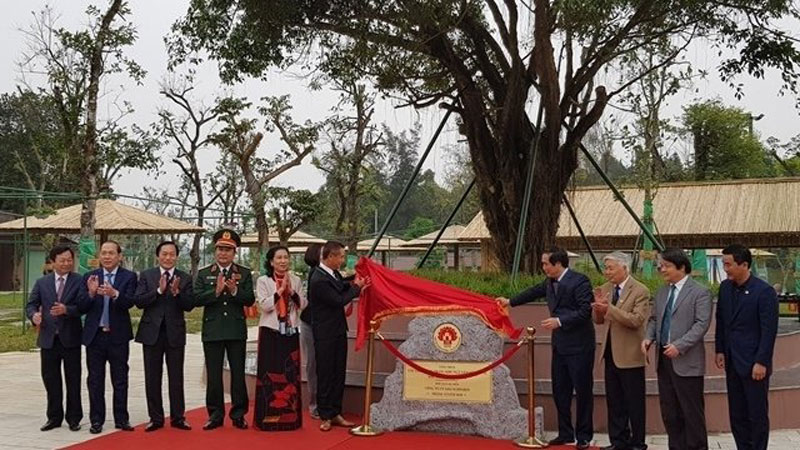
A project, aiming to upgrade the landscape and plant trees in the area of cross-road in Gieng Temple under the Special National Historical Relic Site of Hung Kings Temple in the northern province of Phu Tho, was inaugurated and put into use on December 15, after three months of construction.

At the ceremony.
The project was implemented by Asia Slipform Corporation,
with a VND 30billion investment, which came from private sources.
According to Director of the
Management Board of the Hung Kings Temple relic site, Nguyen Duy Anh, said the
project includes upgrading the system of roads, lighting and trees, and
building 50 booths with architecture suitable for the landscape of the area
Secretary of Phu Tho
Provincial Party Committee, Bui Minh Chau, said that the inauguration and
putting into use of the project before the Lunar New Year 2019 has a very
practical meaning. It will create the most favorable conditions for people
across the country when they visit the Hung Kings Temple during the Lunar New
Year and the Hung Kings Temple Festival 2019 and the following years,
contributing to preserving and promoting the values of the Hung Kings temple
relic site, he add.
The Hung Kings Temple is
located on Nghia Linh Mountain, Phong Chau district, in Phu Tho province, about
100km northwest of Hanoi. It is a complex of ancient tombs, monuments and
temples.
The annual festival to commemorate the Hung Kings,
which falls on the 10th day of the third lunar month, was first recognised as a
national event in 2007.
Source: NDO
The People’s Committee of Lac Son district held a ceremony on April 28 to receive the provincial relic certificate for the ancient rock carving site at Suoi Co stream, located in My Thanh commune.
A special music show titled "The country is in the fullness of joy” has been held at Hoa Binh Square in Hoa Binh city in celebration of the 50th anniversary of the liberation of the South and national reunification (April 30, 1975–2025).
The People's Committee of Lo Son commune, Tan Lac district, has organised the local annual traditional stream fishing festival on April 19 - 20.
As a land deeply intertwined with human history and Vietnam’s millennia-long journey of nation-building and defence, Hoa Binh is often revered for its epic tales and legends.
Residents of Hoa Binh boast a rich cultural identity, reflected in their unique language, traditional attire, customs, and folk melodies – described as "sweet as honey, clear as a mountain stream.”
Lac Son district’s Vu ban town held the 2025 Truong Kha temple festival on April 12–13 (the 15th–16th days of the third lunar month). Since its revival in 2019, the festival has been organised every three years, preserving valuable intangible heritage while meeting the community’s cultural and spiritual needs.



